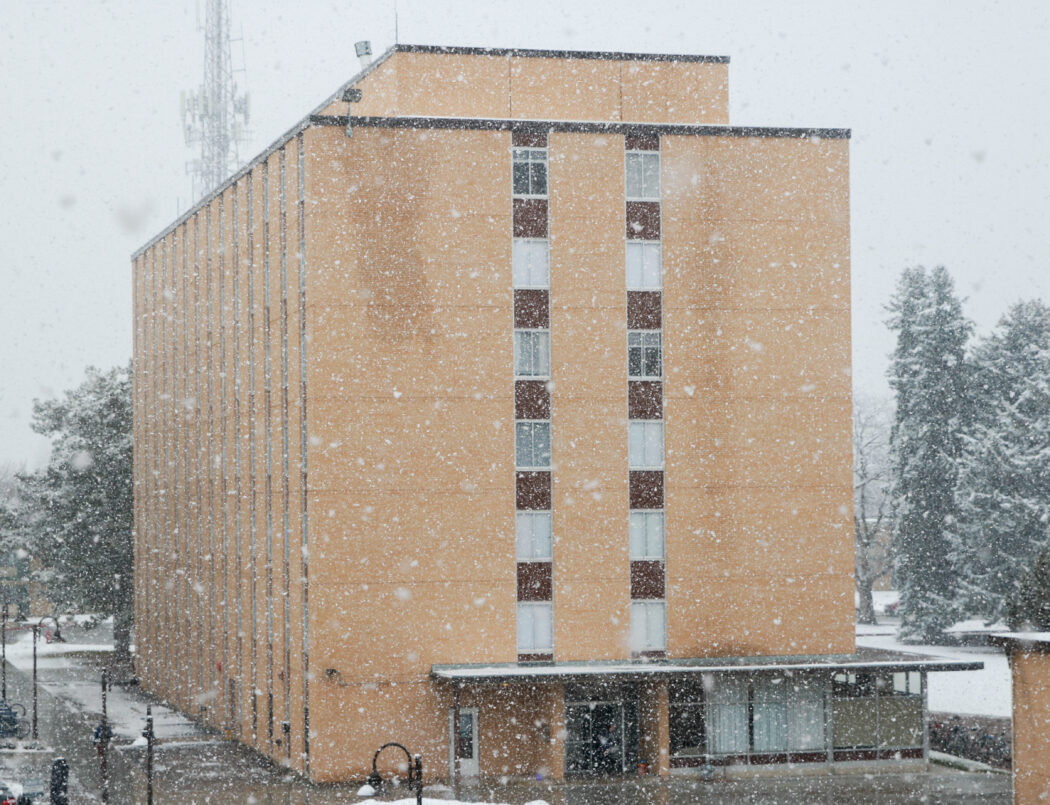Column: Housing crisis worsens with Mountain View Tower’s retirement
For many students, spring semester is when they must determine their living conditions for the next school year. With rising costs, many students may have significant financial concerns.
If recent events concerning Mountain View Tower have taught us anything, it’s that not all resident halls are created equally. Mountain View Tower is the cheapest on-campus student housing option, yet it’s still questionable whether it’s worth saving the money.
USU Student Financial Support estimates the cost of living to be about $7,200 per semester, including about $2,400 in housing and $2,200 in food. Let’s break it down.
If the average rent per month is $800 and the average grocery price is $550, that means you would need to make $1,350 a month just to cover housing and food. For a student being paid $15/hour, they would have to work 90 hours a month, averaging 22.5 hours a week. A typical student working a part-time job would barely make enough to cover rent and food, let alone keep up with tuition, transportation, books and supplies, student fees and any miscellaneous expenses.
Mountain View Tower was the lowest costing option for on-campus housing this year, with rent costing $1,355/semester and requiring a meal plan, the least expensive being $2200. This meal plan includes unlimited swipes and $100 in Dining Dollars, averaging about $6.25 per meal. If we apply the same math, students choosing the cheapest housing option available would still need to work 15 hours a week.
But Mountain View Tower is being retired, leaving Richards Halls as the cheapest option for students wanting to live on campus. Meal plans next year are increasing from $2,200 to $2,600. Richards Hall’s rent will increase from $1,355 to $1,490. If your hourly wage stay at $15/hour, one would need to work two more hours a week just to keep up with the same living conditions.
Meal plans can be an easy and convenient way to feed yourself. However, some students may want more control over their diet and enjoy making their own food. Some people like having the community that on-campus housing provides, while others would rather skip roommate agreements and room checks.
The challenge lies in determining what works best for you. I quickly discovered that as an insomniac, having a private room is important for me. Having my own space reduces my worrying about if I’m being clean or ensuring I’m not taking up someone else’s space. I’m not on edge waiting for my roommate to come home or quietly tiptoe through my room late at night trying not to make noise.
At my first apartment in Logan, I woke up nearly every morning with swollen eyes, a sore throat and a runny nose. I felt awful. Now that I’ve moved, I feel healthier, and I have more energy. Just changing my environment made a huge difference.
Even though my new apartment costs much more, it’s worth it to me because I feel so much better. I can get more done because I’ve had a full eight hours of sleep. I’m not stressed about keeping my space clean, and I can relax knowing I have privacy.
For some people, a college dorm is just a place to stay during the week while you have class. For other students, Logan is their home.
When choosing housing, it’s important to acknowledge your priorities. What works best for you may not work best for another student. Sometimes the cheap option isn’t worth the money. Sometimes investing a little more money into the place you live is invaluable.

